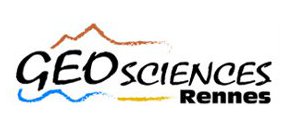Sedimentology of a hypertidal point bar (Mont‐Saint‐Michel Bay, north‐western France) revealed by combining lidar time‐series and sedimentary core data
Résumé
Intertidal meanders developed on salt marshes are known to expand and produce inclined heterolithic stratification rich in fine-grained sediments and to bear evidence for rhythmic deposition in the upper part of the inner meander bend(i.e. the upper part of the point bar). This occurs because the lower point-bar deposits are washed by strong currents, which remove mud drapes and develop discontinuous record of tidal cycles. Although these criteria are widely accepted, facies models for tidal point bars still lack a three-dimensional perspective and overlook the along-bend variability of sediment distribution. The present study focuses on a hypertidal point bar belonging to the upper-intertidal domain of the Mont-Saint-Michel Bay (France), and it analyses the sedimentology of a 3D time-framed accretionary package formed between 28 March 2012 and 29 November 2012 by means of lidar topographic data, geomorphological field surveys and sedimentological core data. To define the 3D time-framed accretionary package, data from thirteen lidar topographic surveys were used to create the point-bar synthetic stratigraphy. Data shows that over the study period the point bar expanded alternating deposition along its seaward and landward sides, pointing out the occurrence of depositional patterns more complex than a simple progressive expansion of the bend. The thickest deposits were accumulated in the point-bar-apex zone, where the largest amount of mud was also stored. High sediment accretion in the bend-apex zone is ascribed to the development of low-energy conditions due to flow and bed configuration. High accretion rate of the point-bar-apex zone promoted also a better preservation of rhythmites, which are almost missing from deposits accumulated along the point-bar sides. This study remarks that preservation of mud and tidal rhythmites within intertidal-point-bar deposits is controlled, not only by their elevation with respect to the tidal range, but also by their location along the point bar.
Origine : Fichiers produits par l'(les) auteur(s)




